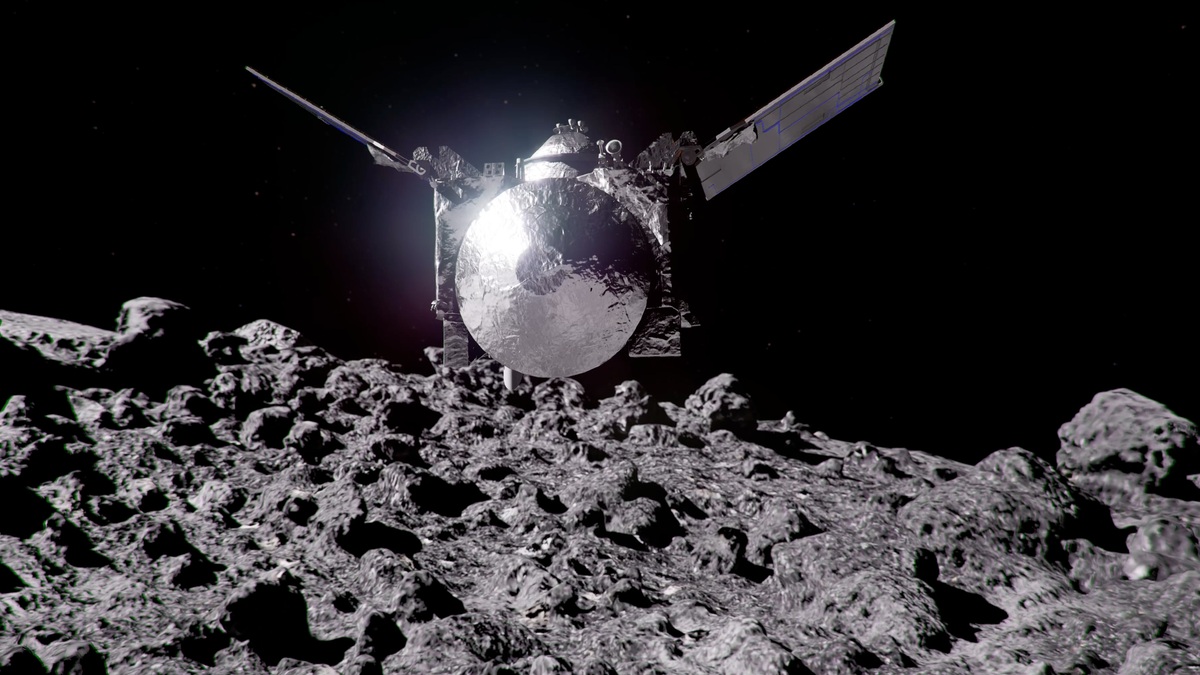New mission, who dis? The spacecraft formerly known as OSIRIS-REx had an impromptu close encounter with the Sun as it follows a newly crafted route to a second asteroid, using one of its solar arrays for shade.
Let’s Eat a Chocolate Xbox Controller
You may remember NASA’s diligent spacecraft that snagged a sample from an asteroid and dropped it off in the Utah desert in September 2023. That same spacecraft is on a bonus mission to a different asteroid, but in order to get there, it’ll need to fly 25 million miles closer to the Sun than it was originally designed to do. On Tuesday, January 2, the mission, now known as OSIRIS-APEX, carried out the first of six close flybys of the Sun, coming to within an unprecedented 46.5 million miles of our host star, exposing the spacecraft to much higher temperatures than it was meant to endure, NASA wrote in a blog post.
Tuesday’s flyby was the first major test for OSIRIS-APEX (short for Origins, Spectral Interpretation, Resource Identification, and Security–Apophis Explorer) as it heads toward its new target: asteroid Apophis. Gizmodo reached out to NASA to check in on the status of the spacecraft following this first solar flyby.
“NASA’s OSIRIS-APEX spacecraft continues to transmit a telemetry signal and operate normally in its new configuration. Once OSIRIS-APEX is farther from the Sun in March, the mission team will re-orient the spacecraft to point its high-gain antenna toward Earth to allow for high-speed communication,” a NASA spokesperson explained in an emailed January 4 statement. “At that point, the team will download and analyze telemetry data to determine how the spacecraft performed during its close encounter with the Sun.”
When it was still OSIRIS-REx, the spacecraft had about a quarter of its fuel left and its instruments were in great condition as it departed from asteroid Bennu in May 2021 with a sample to deliver, according to NASA. That’s why the space agency opted to send the spacecraft on a new errand, exploring asteroid Apophis to observe physical changes the space rock may endure from its close encounter with Earth in April 2029. The asteroid will come to within 20,000 miles (32,000 kilometers) of Earth’s surface, closer than some high-altitude satellites (as an aside, Apophis was once considered a potential threat to Earth, but a 2021 observation campaign concluded that there’s no risk of the asteroid impacting our planet for at least another 100 years).
Related article: Earth Is Safe From Infamous Asteroid Apophis for the Next 100 Years, NASA Says
After dropping off the Bennu sample, the spacecraft has to carry out close passes to the Sun, as well as three Earth gravity assists, to reach Apophis in five years. In order to protect OSIRIS-APEX from overheating during those close encounters with our host star, engineers at Lockheed Martin (NASA’s mission partner) came up with a clever spacecraft configuration. OSIRIS-APEX will maintain a fixed orientation with respect to the Sun while repositioning one of its solar arrays to shade the spacecraft’s most sensitive components while the second one will remain extended to produce power.
“We’ve done a lot of modeling to ensure the spacecraft will be safe,” Dani Mendoza DellaGiustina, principal investigator for OSIRIS-APEX at University of Arizona, Tucson, said in a statement. “But any time you take a piece of space flight hardware beyond the design criteria you incur risk.”
OSIRIS-APEX traveled well inside the orbit of Venus and was at around half the distance between Earth and the Sun. During that time, engineers turned off most of the spacecraft’s instruments and communicated with it at low data rates. When OSIRIS-APEX is farther from the Sun in March and April, engineers will turn the instruments back on to test them.
The OSIRIS-REx spacecraft nailed its previous mission, dropping off the precious cargo as planned. Since landing on Earth, however, engineers have been having trouble opening the canister containing the space rock samples.
This article was updated to include the January 4 statement from NASA.
For more spaceflight in your life, follow us on X (formerly Twitter) and bookmark Gizmodo’s dedicated Spaceflight page.
